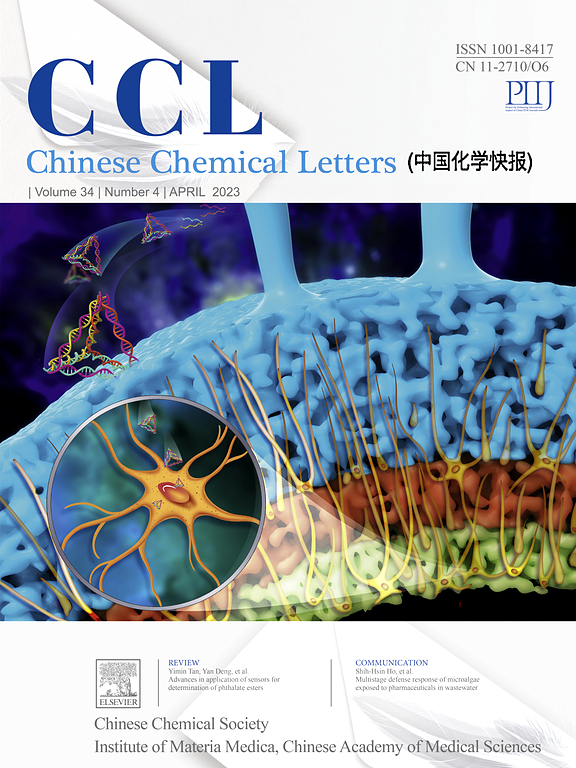等离子体诱导 H4PMo11VO40 催化剂的可控氧化态,用于选择性氧化甲基丙烯醛
IF 8.9
1区 化学
Q1 CHEMISTRY, MULTIDISCIPLINARY
引用次数: 0
摘要
本文首次采用低温介质阻挡放电等离子体(DBD)处理二氧化硅掺杂的 H4PMo11VO40(HPAV)催化剂(DBD(Ar/x)-MF-Catal),并将其应用于催化甲基丙烯醛(MAL)选择性氧化生成甲基丙烯酸(MAA)。这项工作详细研究了通过控制电压、电流、处理时间和处理介质的变化来调节 DBD 放电,从而可控地调节二氧化硅掺杂 HPAV 催化剂上氧化态的浓度。报告了氧化态与 MAL 氧化性能之间的内在联系。研究结果表明,催化性能与氧空位和氧物种(VO2+)的存在有关,是将 MAL 选择性氧化为 MAA 的主要原因。此外,氧空位和 VO2+ 的产生改变了局部电子,使 O2 更容易活化。DFT 理论计算也证明了氧空位和 VO2+ 的形成机理以及电子在高性能聚合物上的特性,阐明了催化剂组分的内在影响。具有合适 VO2+ 和氧空位浓度的 DBD(Ar/10)-MF-Catal 催化剂具有最高的催化性能,MAL 转化率为 90%,MAA 选择性为 70%,并表现出良好的稳定性(500 h)。本文章由计算机程序翻译,如有差异,请以英文原文为准。
The controlled oxidation states of the H4PMo11VO40 catalyst induced by plasma for the selective oxidation of methacrolein
In this paper, low-temperature dielectric-blocked discharge plasma (DBD) was employed for the first time to treat silica-doped H4PMo11VO40 (HPAV) catalysts (DBD(Ar/x)-MF-Catal) and apply them in the catalytic methacrolein (MAL) selective oxidation to produce methacrylic acid (MAA). This work investigates in detail the controllable regulation of the concentration of oxidation states on silica-doped HPAV catalysts by adjusting the DBD discharge with controlled changes in voltage, current, treatment time, and treatment medium. It reports the intrinsic correlation between oxidation states and MAL oxidation performance. The research results indicated that the catalytic performance was related to the presence of oxygen vacancies and oxygen species (VO2+), and are the main reason for the selective oxidation of MAL to MAA. Besides, the generation of oxygen vacancies and VO2+ altered localized electrons, which resulted in the easier activation of O2. Theoretical calculations of DFT also proved the formation mechanism of oxygen vacancies and VO2+ and electron properties on high-performance polymers, which elucidated the intrinsic influence of catalyst components. The DBD(Ar/10)-MF-Catal catalysts with suitable VO2+ and oxygen vacancy concentrations exhibited the highest catalytic performance with 90 % MAL conversion and 70 % MAA selectivity and showed good stability (500 h).
求助全文
通过发布文献求助,成功后即可免费获取论文全文。
去求助
来源期刊

Chinese Chemical Letters
化学-化学综合
CiteScore
14.10
自引率
15.40%
发文量
8969
审稿时长
1.6 months
期刊介绍:
Chinese Chemical Letters (CCL) (ISSN 1001-8417) was founded in July 1990. The journal publishes preliminary accounts in the whole field of chemistry, including inorganic chemistry, organic chemistry, analytical chemistry, physical chemistry, polymer chemistry, applied chemistry, etc.Chinese Chemical Letters does not accept articles previously published or scheduled to be published. To verify originality, your article may be checked by the originality detection service CrossCheck.
 求助内容:
求助内容: 应助结果提醒方式:
应助结果提醒方式:


